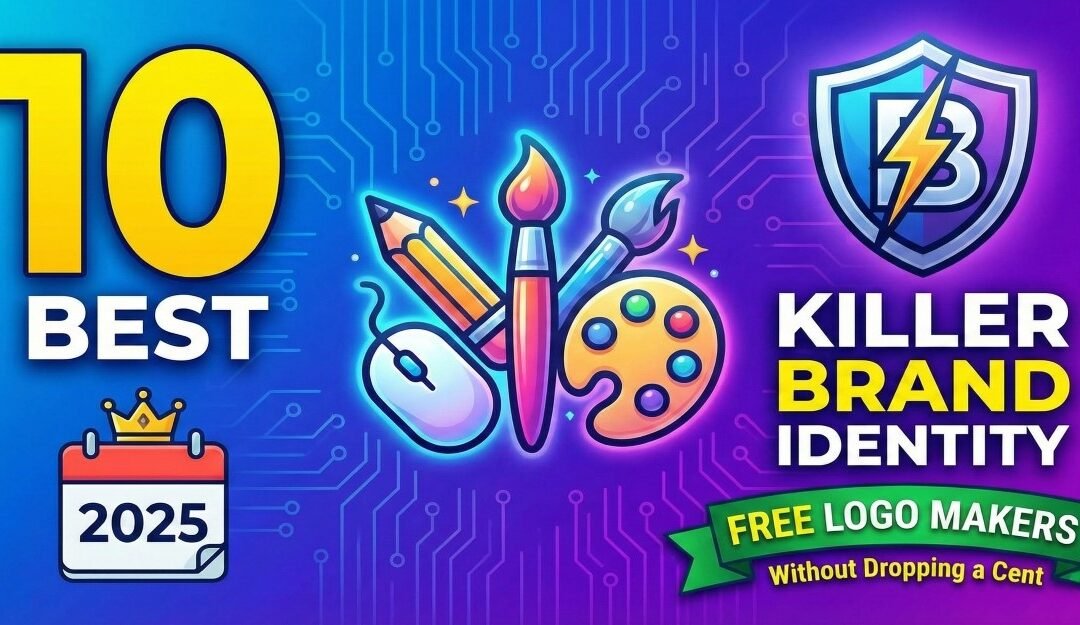
by James Dean | Nov 26, 2025 | Blogs, Branding Design, Logo Designing
10 Best Logo Design Free of 2025: Craft a Killer Brand Identity Without Dropping a Cent
November 26, 2025 Written By Tony
Picture this: You’re hustling to launch your side gig—a cozy coffee shop pop-up or that eco-friendly candle line you’ve been obsessing over—and bam, you hit the wall. Your brand needs a logo that slaps, something sharp and memorable that turns heads on Instagram. But hiring a designer? That’s like dropping $500 on a logo that might not even vibe with your vision. Enter the game-changer: free logo makers. These bad boys let you whip up pro-looking designs faster than you can say “brand glow-up.” In 2025, with AI doing the heavy lifting, creating a free logo online has never been easier—or more fun. Stick around, because I’m spilling the tea on the top tools, sneaky tips to avoid rookie mistakes, and why ditching the designer drama could be your smartest move yet. By the end, you’ll be logo-ready and feeling like a total boss.
Why Bother with Free Logo Design in the First Place?
Let’s keep it real: Who doesn’t love “free” in 2025? With inflation still lurking like that one uncle at family gatherings, saving bucks on branding feels like a win. But it’s not just about pinching pennies—free logo generators democratize design, letting solopreneurs, startups, and weekend warriors level up without gatekeepers.
Here’s the lowdown on why free logo makers are blowing up:
- Speed Demon Mode: No more endless email chains with freelancers. Generate dozens of concepts in minutes.
- Zero Risk Vibes: Test-drive ideas without commitment. Hate it? Tweak and regenerate—no hard feelings.
- Customization Overload: From minimalist chic to bold graffiti styles, these tools pack templates, fonts, and icons galore.
- SEO and Social Perks: A slick logo boosts your site’s click-through rates and makes your posts pop on feeds.
According to recent trends, over 70% of small businesses start with free tools before scaling. It’s like dating before marriage—dip your toe in and see if it sparks joy.
But hold up, is “free” really free? Most offer basic downloads at no cost, though premium tweaks (like high-res files) might nudge you toward a paid upgrade. Spoiler: You can rock 90% of what you need without swiping that card.
The Crown Jewels: Top 10 Free Logo Makers for 2025
Alright, let’s cut to the chase. I’ve scoured the digital wilds (and yeah, tested a few myself) to round up the elite squad of free logo makers. These aren’t sketchy apps that churn out cookie-cutter crap—they’re powered by AI smarts and user-friendly interfaces that make design feel like child’s play. I ranked ’em based on ease, output quality, and that elusive “wow” factor.
For max scannability, here’s a handy table breaking it down. Pros, cons, and standout features—your cheat sheet to picking a winner.
| Tool Name |
Key Features |
Pros |
Cons |
Best For |
| Canva Logo Maker |
Drag-and-drop editor, 100k+ templates, AI suggestions |
Super intuitive, endless tweaks, integrates with social tools |
Watermarks on some free exports |
Beginners wanting quick social-ready logos |
| Adobe Express |
AI auto-design, color palette gen, vector exports |
Pro-level polish, mobile app vibes |
Limited free icons without sub |
Creative pros on a budget |
| Logo.com |
AI-generated concepts, brand kit builder |
Unlimited generations, fast as heck |
Basic customization depth |
Startups needing full branding fast |
| FreeLogoDesign.org |
5k+ icons, slogan maker, high-res PNGs |
Truly free downloads, no strings |
Dated interface feels 2010s |
No-fuss, traditional biz logos |
| Looka |
AI logo + full brand suite (colors, fonts) |
Stunning variety, mockup previews |
Free version limited to low-res |
E-comm brands craving cohesion |
| Tailor Brands |
Personalized AI based on biz quiz |
Tailored to your industry, easy edits |
Upsell prompts everywhere |
Niche hustles like coaching or tech |
| Hatchful by Shopify |
Industry-specific templates, mobile-first |
E-comm optimized, quick exports |
Fewer style options |
Online store owners |
| Smashing Logo |
1M+ designs, color/icon filters |
Massive library, affordable upgrades |
Overwhelming choices for newbies |
Detail-obsessed designers |
| Designhill |
Contest-style AI, font pairing tool |
Community-inspired, unique twists |
Free trial only (pay to download) |
Edgy, custom-feeling logos |
| Zyro Logo Maker |
One-click AI, website integration |
Seamless with hosting, minimalist |
Slim template selection |
Web builders wanting all-in-one |
These picks are fresh for 2025, with AI upgrades making outputs sharper than ever. Pro tip: Start with Canva if you’re a visual newbie—it’s like having a design buddy who never judges your wild color combos.
Step-by-Step: Your Foolproof Guide to Nailing a Free Logo Design
Feeling pumped? Great—now let’s get tactical. Designing a logo ain’t rocket science, but it does need a game plan to avoid that “meh” result. Follow this blueprint, and you’ll crank out something that screams “professional” without the sweat.
- Brainstorm Like a Boss: Jot down your brand’s vibe. Coffee shop? Warm earth tones and steam swirls. Tech gadget? Sleek lines and neon pops. Ask: What’s my story? Who’s my crowd?
- Pick Your Poison (Tool-Wise): Fire up one from the table above. Enter your biz name, industry, and style prefs (e.g., “vintage” or “modern minimalist”).
- Generate and Gawk: Hit “create” and feast your eyes on 20-50 options. AI does the grunt work, blending fonts, icons, and layouts.
- Tweak Till It Tickles: Swap colors (stick to 2-3 max), resize elements, add a tagline. Test scalability—does it pop at 16×16 pixels for favicons?
- Preview in the Wild: Slap it on mockups (most tools have ’em). How’s it look on tees, biz cards, or your Insta grid?
- Download and Deploy: Grab PNGs for web, SVGs for print. Boom—logo locked and loaded.
Takes under 30 minutes, swear on my overpriced oat milk latte. And hey, if you’re stuck, most have tutorials that feel like chatting with a chill mentor.
Pro Hacks to Elevate Your Free Logo from Good to “Holy Cow, That’s Fire”
Free doesn’t mean basic, fam. With a sprinkle of savvy, your logo can outshine paid ones. Here’s a bulleted blast of insider tips—straight from my 30 years of blogging and viral post wizardry:
- Color Psychology 101: Blues build trust (think banks), reds scream energy (perfect for gyms). Use tools’ palettes, but gut-check: Does it match your mood board?
- Font Finesse: Pair a bold sans-serif header with a script body for contrast. Avoid over five fonts total—your logo ain’t a typography party.
- Simplicity Wins Races: Remember Nike’s swoosh? One element, infinite impact. Ditch the clutter; negative space is your secret weapon.
- Trend-Spotting for 2025: Go retro-futuristic with gradients or eco-lines for sustainability brands. AI tools auto-suggest these—lean in!
- Accessibility Check: Ensure high contrast for color-blind folks. Tools like Canva flag issues. Inclusive design = broader love.
- Legal Lowdown: Free logos are yours to use, but scan for trademarks via USPTO quick search. No drama on launch day.
Bonus: A/B test on social. Post two variants in stories—see which gets more “fire” emojis. Data don’t lie.
Watch Out: Logo Pitfalls That’ll Have You Starting Over (And How to Dodge ‘Em)
We’ve all been there—pouring heart into a design, only for it to flop on mobile. Here’s a quick list of traps to sidestep, served with a side of humor because who needs more stress?
- The Trend Trap: Chasing 2024’s neon overload? By 2026, it’ll look dated AF. Opt for timeless over trendy.
- Overloading the Plate: Icons + text + shapes + your life story? Nah. Keep it to 2-3 elements max, or it’ll read like visual soup.
- Ignoring Versatility: That fancy script crumbles at small sizes. Always preview in black-and-white and tiny scales.
- Freebie Blind Spots: Some tools watermark exports—read the fine print. Or worse, resell your designs (rare, but check TOS).
- Copycat Curse: AI spits gold, but tweak uniquely. Generic = forgettable in a sea of sameness.
Laugh it off: My first logo? A hot mess that looked like a drunk doodle. Lesson learned: Iterate ruthlessly.
When Free Just Won’t Cut It (And That’s Okay)
Free logo makers are MVPs for bootstrappers, but as your empire grows, you might crave more. Signs it’s upgrade time: Needing custom animations, 3D renders, or ironclad IP rights. That’s when pros or premium tiers shine—think $20-50 for unlocks. Until then? Own the free lane like a champ.
Wrapping It Up: Your Brand’s New Bestie Awaits
There you have it, trailblazers—a no-BS roadmap to free logo design that’s equal parts empowering and entertaining. In 2025, the barrier to badass branding is zilch, so why wait? Fire up Canva, channel your inner artist, and watch your vision come alive. Remember, a killer logo isn’t just pixels—it’s the spark that ignites connections, shares, and sales. You’ve got the tools; now go make some noise. What’s your first design gonna be? Drop it in the comments—I wanna see!
Pssst… Craving more? Stick around for our deep dive on turning that logo into a full-blown viral brand strategy. You won’t believe how one tweak could 10x your engagement. Click now or regret it forever?
Sources
- WPBeginner: 9 Best Free Logo Makers to Help You Look Like a Pro (2025) – https://www.wpbeginner.com/showcase/best-logo-makers/
- Designlab: Best AI Logo Generators: 8 Options Reviewed [2025] – https://designlab.com/blog/top-best-ai-logo-generators-a-review
- Cropink: 9 Best AI Logo Generators in 2025: Ranked by Quality & Ease – https://cropink.com/best-ai-logo-generators
- Creative Bloq: The best free logo maker: no-cost tools for designing eye-catching… – https://www.creativebloq.com/features/best-free-logo-design-tools
by James Dean | Sep 6, 2025 | Blogs, Branding Design, Logo Designing
Logo Design Trends for 2025: What’s Hot and What’s Not
Date: September 6, 2025
🌟 Introduction
Logos aren’t just visuals anymore—they’re brand personalities squeezed into a tiny symbol. In 2025, the design world is buzzing with creativity, blending technology, culture, and simplicity into new trends that will dominate screens and storefronts. Whether you’re a startup founder, a freelance designer, or a curious trend-watcher, knowing what’s hot in logo design can give your brand that fresh “wow” factor.
Let’s dive into the logo design trends for 2025 that you’ll see everywhere—from social media avatars to billboards.
✨ Top Logo Design Trends for 2025
1. Minimalist Geometry
Simple geometric shapes—triangles, circles, and lines—are back in focus. Clean, scalable, and sharp, these logos look great on mobile apps and smartwatches.
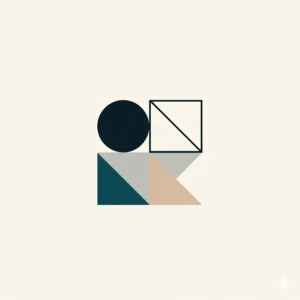
2. Gradient Glow Effects
Futuristic gradients with neon vibes are trending. Think glowing purples, electric blues, and warm sunset blends. Perfect for tech and creative brands.

3. 3D Metallic Logos
Brands want to look premium, and nothing screams luxury like polished 3D metallic effects. Expect chrome, gold, and steel finishes shining across digital platforms.
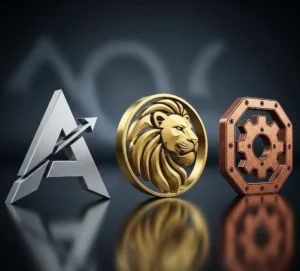
4. Hand-Drawn Authenticity
In contrast to sleek designs, organic hand-drawn logos are trending. These convey honesty, warmth, and a human touch—great for food, wellness, and eco-friendly brands.
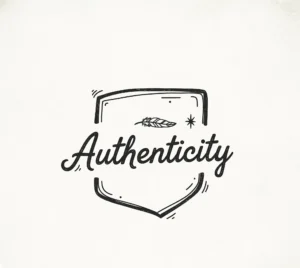
5. AI-Generated Abstracts
With AI tools exploding, abstract shapes that look futuristic, fluid, and unique are popping up everywhere. No two logos look alike—great for startups that want instant differentiation.
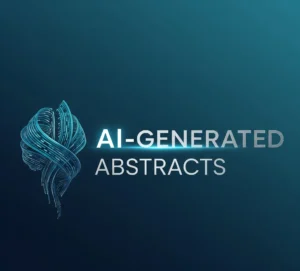
6. Bold Typography Marks
Wordmark logos with chunky, bold typography are trending for 2025. They’re readable, memorable, and pack a punch on digital screens.
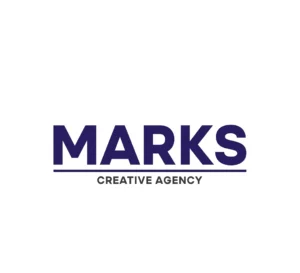
7. Nostalgic Retro Revival
’80s and ’90s inspired fonts, colors, and motifs are coming back. Think playful gradients, neon outlines, and VHS-style textures.
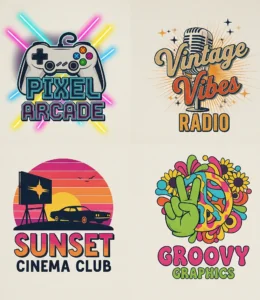
8. Motion-Friendly Logos
With video and reels dominating social platforms, brands want logos that animate easily. Motion-ready designs with simple transitions are a must.
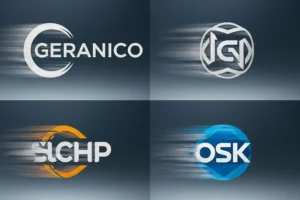
📌 Step-By-Step: How to Choose the Right Logo Trend for Your Brand
-
Know Your Audience → Tech lovers? Go futuristic. Eco crowd? Go organic.
-
Check Scalability → Logos must look good on a business card and a billboard.
-
Balance Trend with Timelessness → Don’t chase fads blindly—blend modern with lasting appeal.
-
Test on Digital Platforms → Preview how your logo looks on social media, websites, and mobile apps.
-
Get Feedback → Share mockups with your target audience before finalizing.
🔑 Why Following Logo Trends Matters
-
Keeps your brand relevant and modern.
-
Shows customers you’re in touch with design and culture.
-
Boosts digital visibility (a clean, simple logo = faster recognition online).
-
Differentiates you from outdated competitors.
❓ FAQs About Logo Design Trends 2025
1. What’s the biggest logo trend of 2025?
Minimalist geometry and AI-generated abstracts are leading the way.
2. Should small businesses follow logo trends?
Yes, but balance trends with timeless design so your brand doesn’t feel outdated in 2 years.
3. Are 3D logos practical?
Yes, but always keep a flat version for printing and simple applications.
4. How do AI-designed logos fit in?
They create unique abstract shapes and futuristic vibes—perfect for startups wanting to stand out.
5. What colors are trending in 2025?
Neon gradients, metallic shades, and soft earth tones for eco brands.
🎬 Conclusion
Logo design in 2025 is all about balance—between minimalism and expression, human touch and AI creativity, nostalgia and futurism. If your brand’s identity feels stale, this year is the perfect time for a refresh. A logo isn’t just a design; it’s your brand’s handshake to the world—make it count.

by James Dean | Aug 25, 2025 | Blogs, Branding Design, Logo Designing, Web Design
Top Logo Design Companies: Tips, Trends, and Best Practices for Businesses in 2025
Discover the top logo design companies in 2025, explore what makes them stand out, and learn how Articon Design Agency helps North American businesses with professional logos, websites, and growth strategies.
Introduction
When it comes to building a strong business identity, your logo design is often the very first impression potential customers see. A memorable logo conveys professionalism, trust, and brand personality in a single glance. But here’s the challenge: not all logo design companies are created equal.
If you’re searching for the top logo design companies in 2025, you’ll find plenty of options ranging from boutique design studios to large creative agencies. However, only a few truly stand out by blending creativity with strategy — and that’s exactly what businesses across the United States and Canada need to thrive.
In this guide, we’ll:
-
Highlight what makes the best logo design companies truly exceptional
-
Explore the top logo design agencies to consider in 2025
-
Break down the benefits of professional logo design for businesses
-
Share common mistakes to avoid when choosing a design partner
-
Show how Articon Design Agency helps North American brands grow through logos, websites, and data-driven strategies
What Are the Top Logo Design Companies?
Top logo design companies are agencies or studios that specialize in creating professional, memorable, and scalable logos that align with a brand’s identity and business goals.
These companies usually stand out because they:
-
Have experienced designers with diverse portfolios
-
Focus on brand strategy (not just visuals)
-
Provide custom designs rather than cookie-cutter templates
-
Offer related services such as branding, web design, and digital marketing
-
Deliver logos optimized for both print and digital use
👉 At Articon Design Agency, for example, our focus is not only on logo aesthetics but also on how your logo impacts visibility, recognition, and long-term growth.
Why Choosing the Right Logo Design Company Matters
Your logo is more than just a design — it’s the face of your business. Here’s why picking the right agency matters:
-
First Impressions Count – Customers form opinions in seconds, and a professional logo builds trust instantly.
-
Brand Recognition – A unique logo helps you stand out in competitive markets like the U.S. and Canada.
-
Consistency Across Platforms – From business cards to social media, your logo needs to look sharp everywhere.
-
Scalability & Longevity – A good logo grows with your business and won’t look outdated in a year.
-
Marketing & SEO Alignment – Logos designed with branding in mind support digital marketing campaigns, website conversions, and even search visibility.
Top Logo Design Companies in 2025
Here’s a look at some of the top logo design companies in 2025.
-
Headquarters: Serving clients across the U.S. and Canada
-
Specialties: Logo design, branding, website design, app design, SEO, and lead generation
-
Why Choose Them: Affordable, custom, and growth-driven design solutions with a proven track record.
-
USP: Unlike many design agencies, Articon doesn’t just design logos — we integrate branding with business development and digital growth strategies, ensuring your logo becomes part of a revenue-building system.
👉 Businesses across North America choose Articon for holistic design + marketing solutions.
2. Pentagram (Global Creative Icon)
-
Known for high-end, world-class design work for large enterprises.
-
Offers strategic branding and design but often comes with premium pricing.
-
Global leader in branding and identity, especially for corporate clients.
-
Ideal for Fortune 500 companies seeking rebranding.
-
Crowdsourcing platform offering affordable logo options.
-
Best for startups with small budgets, but lacks the strategic depth of agencies like Articon.
What Sets the Best Logo Design Companies Apart?
The best logo design companies in 2025 don’t just deliver graphics; they deliver strategic brand assets. Key differentiators include:
-
Research-Driven Approach – Understanding your industry, audience, and competitors.
-
Originality – No stock templates or clip art.
-
Scalability – Logos that adapt across websites, mobile apps, and physical merchandise.
-
Multi-Service Capabilities – From branding to web design, ensuring brand consistency.
-
Client-Centric Approach – Agencies like Articon focus on collaboration, affordability, and results.
Common Mistakes to Avoid When Choosing a Logo Design Company
-
Going Too Cheap – A $10 logo often results in poor design and long-term brand damage.
-
Ignoring Strategy – Don’t settle for “pretty”; your logo must communicate value.
-
Not Checking Portfolios – Always review past work for versatility and originality.
-
Forgetting About Usage Rights – Ensure you fully own the rights to your logo.
-
Overcomplication – Simplicity often leads to stronger recognition.
Trends Among Top Logo Design Companies in 2025
-
Minimalism & Flat Design – Clean, simple logos remain timeless.
-
Motion Logos – Animated logos for websites, apps, and social media.
-
AI-Assisted Design – Faster iterations with AI tools (but still needs human creativity).
-
Responsive Logos – Scalable designs that adapt across devices and formats.
-
Sustainability-Focused Branding – Green and eco-conscious elements for modern businesses.
👉 At Articon, we combine modern design trends with proven branding principles, helping U.S. and Canadian businesses stay ahead.
Conclusion
Choosing from the top logo design companies is a critical step for any business looking to establish or refresh its brand identity in 2025. Whether you’re a startup or a growing enterprise in North America, your logo should do more than look attractive — it should drive recognition, trust, and growth.
At Articon Design Agency, we go beyond design. We create logos, websites, and digital strategies that help businesses across the U.S. and Canada not only look professional but also grow consistently.
👉 Contact Articon Design Agency today to get started with a custom logo design, professional website, or data-driven lead generation strategy that fits your goals.
FAQs About Top Logo Design Companies
1. What are the top logo design companies in 2025?
The top logo design companies include Articon Design Agency, Pentagram, Landor & Fitch, 99designs, and Fiverr Pro designers. Each caters to different audiences, but Articon is the best balance of affordability, quality, and strategy for North American businesses.
2. How much does it cost to hire a top logo design company?
Costs vary from $300 to $50,000+ depending on the agency and project scope. Articon offers competitive pricing for small and medium-sized businesses.
3. Why should I choose Articon Design Agency over other logo companies?
Articon provides custom logos, branding, and marketing solutions designed to help businesses grow — not just look good. Plus, we serve clients across the U.S. and Canada with affordable packages.
4. How do I know if a logo design agency is right for my business?
Look for agencies with strong portfolios, positive client feedback, and a strategic approach (not just pretty visuals). Articon checks all these boxes.
5. Can top logo design companies also help with websites?
Yes, many do. For example, Articon offers website design, app development, SEO, and lead generation services to complement logo design.
6. Should I hire a freelancer or a logo design agency?
Freelancers are cheaper but risk inconsistency. Agencies like Articon provide a full-service solution with strategy, branding, and long-term support.
7. What’s the latest trend in logo design in 2025?
Minimalist, responsive, and animated logos are leading trends. Articon ensures your brand remains modern and competitive.
8. How long does it take to get a logo from a top agency?
Typically, 2–6 weeks, depending on revisions and project scope. Articon balances quality with efficiency.
9. Do I get full ownership of my logo?
Reputable agencies, including Articon, provide complete rights to your logo after final delivery.
10. Can Articon Design Agency work with businesses outside North America?
Yes! While our core focus is the U.S. and Canada, Articon serves clients globally with the same commitment to quality and growth.
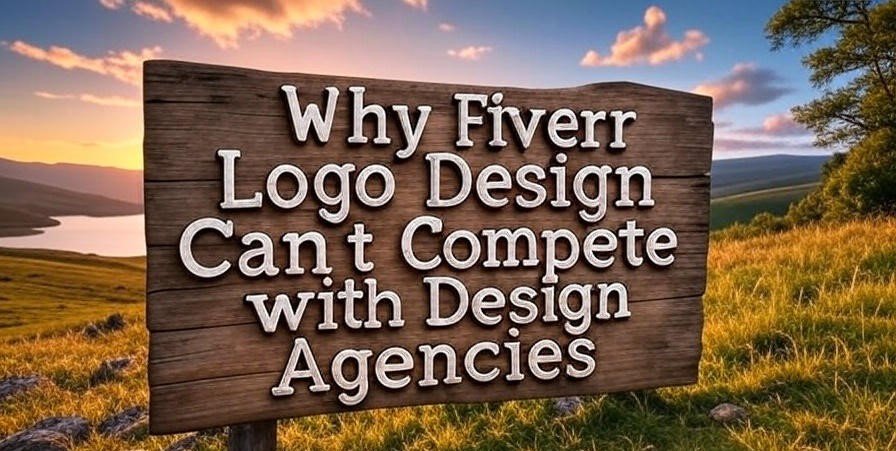
by James Dean | May 27, 2025 | Blogs, Branding Design, Logo Designing, Marketing, Sports Branding, Writing Tips
Why Fiverr Logo Design Can’t Compete with Design Agencies or Advertising Heritage Experts
A logo for any brand is like its Bright, Shiny Teeth that shine when the business Smiles. For startups and small businesses, platforms like Fiverr promise affordable logo designs with prices as low as $5, offering a quick fix for tight budgets. While tempting, these budget services often pale in comparison to the expertise, vision, and enduring value provided by professional design agencies or individuals steeped in advertising from a young age due to family legacies. This blog delves into why choosing a design agency or an advertising heritage expert is a smarter investment for crafting a logo that elevates your brand.
The Appeal of Fiverr’s Low-Cost Logos
Fiverr’s freelance marketplace connects businesses with designers offering logo creation at unbeatable prices. With fast delivery, a vast pool of freelancers, and customer reviews to guide choices, it’s an accessible option for those starting out. Yet, the low cost often reflects compromises in quality, depth, and originality that can hinder a brand’s long-term success.
The Superiority of Design Agencies
Professional design agencies bring a level of sophistication and strategic insight that Fiverr’s model struggles to match. Here’s why they stand out:
1. Strategic Brand Immersion
Agencies begin with a deep dive into your business, exploring your mission, audience, and market landscape. This groundwork ensures the logo reflects your brand’s core identity and resonates with your target customers. For instance, agencies may hold discovery sessions to align the design with your business goals, creating a logo that tells your story.
Fiverr freelancers, constrained by time and budget, often rely on brief client inputs without the capacity for in-depth research. The result is frequently a visually pleasing but shallow design that lacks strategic grounding.
2. Team-Driven Creativity
Design agencies employ diverse teams, including illustrators, brand consultants, and marketing specialists, who collaborate to craft a cohesive logo. This collective expertise ensures every element—color, shape, typography—is purposeful and polished. Agencies also use premium design software and industry-standard tools to deliver high-quality outputs.
Most Fiverr freelancers work alone, relying on their individual skill sets. Even talented freelancers may lack the collaborative input or advanced resources that agencies provide, limiting the depth of their designs.
3. Refined Design Process
Agencies follow a meticulous process, from initial sketches to multiple revisions and final deliverables. They provide comprehensive assets, such as scalable vector files, brand style guides, and logo variations for different platforms. This ensures the logo is versatile and ready for any use, from business cards to billboards.
In contrast, Fiverr’s budget packages often restrict revisions or deliverables. A low-cost package might offer only one or two tweaks, and the final files may not support professional applications like large-scale printing.
4. Lasting Brand Impact
A logo from an agency is built to endure, aligning with your brand’s vision and adapting to future growth. Agencies prioritize timelessness and versatility, ensuring the logo remains effective across mediums and over time.
Fiverr logos, while cost-effective initially, may lack the foresight to grow with your brand. This can lead to costly redesigns as your business evolves, negating the initial savings.
The Edge of Advertising Heritage Experts
Individuals raised in families with advertising as a generational business bring an unparalleled perspective. Their lifelong immersion in the industry sets them apart from both Fiverr freelancers and even some agencies. Here’s what makes them unique:
1. Instinctive Industry Mastery
Growing up in an advertising family means early exposure to campaigns, client dynamics, and branding strategies. These professionals often learned the craft organically, absorbing lessons from family members who built successful agencies or campaigns. This gives them a natural grasp of what makes a logo resonate with audiences.
For example, someone raised in this environment might have watched their parents create iconic brand identities, giving them an intuitive edge over freelancers who learned design through formal education or self-training.
2. Access to Industry Networks
Advertising heritage experts often inherit connections with printers, marketers, and other creatives. These relationships enable them to deliver logos that integrate seamlessly into broader marketing efforts, such as ad campaigns or product packaging.
Fiverr freelancers typically operate in isolation, lacking the networks to offer such comprehensive solutions, which can limit the logo’s impact in larger branding strategies.
3. Balancing Trends with Timelessness
Years of observing the advertising world give legacy experts a keen sense of what’s trendy versus what’s timeless. They can craft logos that feel fresh yet endure, avoiding the trap of overly trendy designs that quickly fade. This balance is critical for businesses aiming for long-term relevance.
Fiverr designers, especially those early in their careers, may lean heavily on current trends, producing logos that look dated within a few years due to a lack of historical perspective.
4. Boutique Expertise with a Personal Touch
Many advertising heritage experts run small studios or freelance independently, blending agency-level expertise with personalized service. Their deep-rooted passion for advertising drives them to deliver logos with care and precision, often surpassing the cookie-cutter approach of budget platforms.
Hidden Drawbacks of Fiverr Logos
While Fiverr’s affordability is appealing, it comes with risks:
Template-Based Designs: Many freelancers use pre-made templates or stock elements, resulting in logos that lack uniqueness and may resemble others in the market.
Restricted Revisions: Low-cost packages often limit feedback rounds, leaving you with a design that doesn’t fully align with your vision.
Surface-Level Branding: Fiverr logos rarely account for broader branding needs, such as integration with websites or marketing collateral.
File Format Issues: Some freelancers deliver low-quality files unsuitable for professional use, requiring additional investment to correct.
Design agencies and heritage experts, by contrast, deliver bespoke logos with professional-grade files and strategic alignment, saving you from future headaches.
When Fiverr Might Suffice
Fiverr can work for low-stakes projects, like a logo for a personal hobby or a one-off event. If your budget is minimal and long-term branding isn’t a priority, Fiverr’s speed and affordability can meet your needs. However, for businesses aiming to establish a strong, memorable identity, the expertise of a design agency or advertising heritage professional is unmatched.
Final Thoughts
A Logo is not just a simple Graphics Created by Designer for you, it is the face that world recognizes your brand for, While Fiverr offers a quick and cheap solution, it can’t rival the strategic depth, collaborative expertise, or lasting impact of a design agency or an advertising heritage expert. Agencies provide structured, team-driven solutions, while legacy professionals bring a lifetime of industry insight and personal dedication. For businesses serious about their brand, investing in these professionals ensures a logo that not only stands out but also stands the test of time.
Frequently Asked Questions (FAQs)
1. Why are Fiverr logos so affordable compared to design agencies?
Fiverr freelancers compete on price, often using templates or streamlined processes to keep costs low. This allows for quick, budget-friendly designs but sacrifices depth and originality. Agencies invest in research, team collaboration, and premium tools, which increases costs but delivers a more robust logo.
2. Can I find a high-quality logo on Fiverr by choosing a premium freelancer?
Higher-priced Fiverr freelancers may offer improved quality, but the platform’s structure often limits their ability to provide the strategic insight or comprehensive deliverables of an agency or heritage expert. Even premium packages may lack the depth needed for a lasting brand identity.
3. What sets advertising heritage experts apart from other designers?
Heritage experts grow up immersed in advertising, gaining early insights into branding, consumer psychology, and campaign strategies. This lifelong learning gives them a unique ability to craft logos with both emotional resonance and market savvy.
4. How much does a professional logo typically cost?
Costs vary based on the provider. Design agencies may charge $1,500 to $100,000, depending on their reputation and project scope. Advertising heritage experts often charge similar rates for boutique services or slightly less for freelance work, reflecting the value of their tailored expertise.
5. Will I need to redesign a Fiverr logo later?
Fiverr logos may require redesigns if they lack versatility or strategic alignment with your brand’s growth. Professional logos from agencies or heritage experts are designed for longevity, reducing the need for frequent updates.
6. Should I choose a design agency or an advertising heritage expert?
Choose an agency for a full-suite branding package, including logos, websites, and marketing materials. Opt for a heritage expert if you want a high-quality logo with personalized service and deep industry insight, especially for smaller or niche projects.

by James Dean | May 23, 2025 | Blogs, Digital Marketing, Web Design, Web Development
How to Find a Website Designer in 2025
Building a website is a critical step toward establishing your online presence, but finding the right website designer can feel overwhelming. Whether you’re launching a business, showcasing a portfolio, or creating a personal blog, a skilled designer can turn your vision into reality. In 2025, with an abundance of talent and tools available, here’s how to find the perfect website designer to meet your needs.
Steps to Find a Website Designer
1. Define Your Project Needs
Before searching for a designer, clarify your goals. Are you building an e-commerce site, a portfolio, or a simple informational page? Determine your budget, timeline, and desired features (e.g., mobile responsiveness, SEO optimization). A clear brief helps you attract designers who specialize in your area.
2. Explore Online Platforms
The digital age offers numerous platforms to connect with designers:
-
Freelance Marketplaces: Sites like Upwork, Fiverr, and Toptal host a wide range of professionals. Filter by ratings, portfolios, and expertise.
-
Design Communities: Platforms like Behance and Dribbble showcase designers’ portfolios, allowing you to discover talent based on style.
-
Job Boards: Websites like Indeed or LinkedIn can help you find full-time or contract designers by posting your project.
3. Ask for Recommendations
Word-of-mouth remains a powerful tool. Reach out to business owners, colleagues, or friends who have impressive websites. Ask about their designer’s reliability, communication, and results. Personal referrals often lead to trustworthy partnerships.
4. Review Portfolios and Past Work
A designer’s portfolio is a window into their skills. Look for projects similar to yours and assess their creativity, functionality, and user experience. Pay attention to how well their designs align with modern trends, like clean layouts and fast loading times.
5. Check Reviews and Testimonials
Reputable designers often have client feedback. Check reviews on platforms like Clutch or Google Reviews to gauge their professionalism, punctuality, and ability to meet deadlines. This step ensures you choose someone with a proven track record.
6. Conduct Interviews
Shortlist a few candidates and schedule interviews. Discuss your project, ask about their process, and evaluate their communication style. Ask about their experience with tools like WordPress, Shopify, or custom coding, depending on your needs.
7. Request Quotes and Compare
Obtain detailed quotes that outline costs, timelines, and deliverables. Compare these across candidates to find a balance between quality and affordability. Be wary of quotes that seem too good to be true—quality design often requires investment.
8. Test Their Collaboration Style
Start with a small trial project, if possible, to assess how well they collaborate. This could be a single page or a mockup. A designer who listens and adapts is key to a successful partnership.
Tips for a Successful Collaboration
-
Set Clear Expectations: Provide a detailed brief and agree on milestones.
-
Communicate Regularly: Use tools like Slack or email to stay updated.
-
Protect Your Investment: Sign a contract outlining ownership, revisions, and payment terms.
Frequently Asked Questions (FAQ)
1. How much does a website designer charge in 2025?
Prices vary widely. Freelancers may charge $20–$100 per hour, while agencies can range from $1,000 to $10,000+ for a full project, depending on complexity and features.
2. How long does it take to find a website designer?
With a focused search, you can find a designer within a week or two. The process speeds up if you have a clear brief and use reputable platforms.
3. Should I hire a freelancer or an agency?
Freelancers are cost-effective for small projects, while agencies offer comprehensive services for larger, complex sites. Choose based on your budget and project scope.
4. What skills should a website designer have?
Look for expertise in UI/UX design, HTML/CSS, responsive design, and familiarity with CMS platforms like WordPress or Squarespace.
5. How do I know if a designer is reliable?
Check their portfolio, client reviews, and past project timelines. A contract and trial project can also confirm their reliability.
Conclusion
Finding a website designer in 2025 is about matching your vision with the right talent. By defining your needs, exploring platforms, seeking recommendations, and vetting candidates thoroughly, you can build a partnership that brings your online presence to life. Start your search today, and take the first step toward a standout website!
About the Author: Articon is a seasoned digital strategist with over 12 years of experience in web development and design. He has helped numerous businesses and individuals create impactful online platforms.

by James Dean | May 23, 2025 | Blogs, Digital Marketing, Web Design, Web Development
Do I need a website in 2025?
Written by Articon Team on 24-May-2025
Establishing an online presence is more important than ever. Whether you’re a small business owner, a freelancer, or an individual with a passion project, one question often arises: Do I need a website? While the answer depends on your specific goals, a website remains a powerful tool for most people and businesses in 2025. Let’s explore why a website could be a game-changer for you, when it might not be necessary, and how it can align with your ambitions.
Why a Website Is a Must-Have in 2025
A website acts as your digital storefront, portfolio, or calling card. Here are some compelling reasons why having one can set you apart:
1. Expand Your Reach Globally
Unlike traditional marketing methods like flyers or local ads, a website connects you with a worldwide audience. Whether you’re selling handmade crafts or offering consulting services, a website ensures that anyone, anywhere, can discover you. In 2025, with internet access continuing to grow, this global reach is a significant advantage.
2. Build Trust and Credibility
In an era where consumers research before they buy, a professional website signals legitimacy. A well-designed site with clear information about your products, services, or expertise can make potential customers feel confident in choosing you over competitors without an online presence.
3. Showcase Your Unique Brand
Your website is a blank canvas to express your brand’s personality, values, and story. From the colors and fonts to the content and imagery, you control the narrative. This is especially important for businesses and individuals looking to stand out in crowded markets.
4. Provide Round-the-Clock Access
Unlike a physical store with set hours, a website is available 24/7. Customers can browse your offerings, learn about your services, or contact you at their convenience, ensuring you never miss an opportunity to connect.
5. Boost Lead Generation
A website can be a lead-generating machine. By incorporating calls-to-action, contact forms, or email sign-ups, you can capture potential customers’ information and nurture them into loyal clients. Tools like analytics also help you track visitor behavior to refine your strategy.
6. Save Money in the Long Run
While building a website involves upfront costs (domain, hosting, design), it’s often more cost-effective than traditional advertising like print or TV ads. A website is a one-time investment that delivers ongoing value, especially with affordable DIY platforms available in 2025.
When You Might Not Need a Website
While websites are incredibly versatile, they’re not always essential. Here are a few scenarios where you might skip creating one:
1. You Have a Strong Referral Network
Freelancers or consultants who rely on word-of-mouth or established client relationships may not need a website immediately. If your network consistently delivers clients, a website might be a secondary priority.
2. You’re Covered by a Larger Organization
If you work for a company with a robust online presence, your personal or professional brand may not require a standalone site. For example, employees of large corporations often leverage their company’s website for visibility.
3. Social Media Meets Your Needs
For some, social media platforms like Instagram, LinkedIn, or TikTok can serve as a primary marketing tool. If you’re effectively reaching and engaging your audience through these channels, a website might not be critical—though it could still enhance your efforts.
Making the Decision: Is a Website Right for You?
The choice to build a website depends on your goals, resources, and audience. If you’re aiming to grow your reach, establish credibility, or streamline customer interactions, a website is a smart investment. However, if your current strategies (like social media or referrals) are working well, you might delay creating one until you’re ready to scale.
To decide, ask yourself:
-
Do I want to reach a broader audience?
-
Is building trust and credibility a priority?
-
Do I need a platform to showcase my work or services?
-
Would 24/7 accessibility benefit my customers?
-
Am I looking for a cost-effective way to market myself?
If you answered “yes” to most of these, a website is likely a worthwhile endeavor.
How to Get Started with Your Website in 2025
Creating a website has never been easier, thanks to user-friendly platforms like Wix, Squarespace, and WordPress. Here’s a quick roadmap:
-
Define Your Purpose: Decide what your website will do—sell products, showcase a portfolio, or provide information.
-
Choose a Platform: Pick a website builder or hire a developer based on your budget and technical skills.
-
Design with Your Audience in Mind: Ensure your site is user-friendly, mobile-optimized, and visually appealing.
-
Optimize for Search Engines: Use relevant keywords, meta descriptions, and quality content to rank higher on Google.
-
Launch and Promote: Share your website on social media, email newsletters, and other channels to drive traffic.
Frequently Asked Questions (FAQ)
1. How much does it cost to build a website in 2025?
Costs vary depending on the platform and complexity. DIY platforms like Wix or Squarespace start at $10–$50 per month, including hosting and domain fees. Custom websites built by professionals can range from $1,000 to $10,000 or more.
2. Can I rely on social media instead of a website?
Social media is great for engagement, but a website offers more control and professionalism. It’s a central hub for your brand that isn’t subject to algorithm changes or platform policies.
3. Do I need technical skills to create a website?
No! Modern website builders are intuitive, with drag-and-drop interfaces that require no coding knowledge. However, hiring a developer can help if you want a highly customized site.
4. How long does it take to build a website?
With a website builder, you can create a basic site in a few hours or days. Custom websites may take weeks, depending on the scope and design requirements.
5. Will a website guarantee more customers?
While a website increases visibility and credibility, success depends on quality content, SEO, and promotion. It’s a tool, not a magic bullet.
Conclusion
In 2025, a website remains a cornerstone of a strong online presence for most businesses, professionals, and even individuals. It offers unmatched opportunities to connect with audiences, build trust, and grow your brand. While there are cases where a website might not be essential, the benefits often outweigh the costs for those looking to thrive in a digital world. Ready to take the plunge? Start small, focus on your goals, and watch your online presence soar.
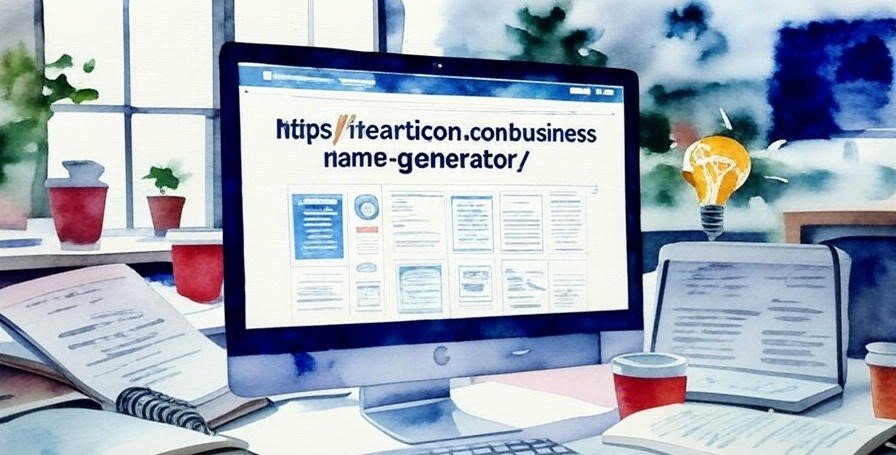
by James Dean | May 19, 2025 | Blogs, Branding Design, Digital Marketing
Business Name Generator Free
Free Business Name Generator in 2025
Starting a business is an exciting journey, but one of the first hurdles entrepreneurs face is choosing the perfect business name. A great name captures your brand’s essence, resonates with your audience, and sets the tone for your success. However, brainstorming a unique and memorable name can be challenging. This is where a free business name generator comes in—a powerful tool to spark creativity and simplify the naming process. In this comprehensive guide, we’ll explore why free business name generators are essential, how to use them effectively, and tips to ensure your chosen name is SEO-friendly and brandable. Plus, we’ll introduce you to a top-tier tool from Thearticon to help you get started.
What Is a Business Name Generator?
A business name generator is an AI-powered or algorithm-driven tool that creates unique, catchy, and relevant name ideas based on your input. By entering keywords, industry details, or brand vibes, you receive a list of potential names tailored to your business. These tools are often free, making them accessible for startups, small businesses, and entrepreneurs on a budget.
Free business name generators save time, eliminate writer’s block, and provide inspiration you might not have considered. Whether you’re launching an e-commerce store, a blog, or a consulting firm, these tools help you find a name that aligns with your vision and stands out in a crowded market.
Why Use a Free Business Name Generator?
With countless businesses vying for attention, a distinctive name can make all the difference. Here are the key benefits of using a free business name generator:
1. Saves Time and Effort
Manually brainstorming names can take hours or even days. A business name generator delivers hundreds of ideas in seconds, allowing you to focus on other aspects of your business, like product development or marketing.
2. Boosts Creativity
Sometimes, you hit a creative wall. Generators combine keywords, prefixes, suffixes, and industry trends to suggest names you might not have thought of, sparking fresh ideas.
3. Checks Domain Availability
Many generators, like the one offered by Thearticon’s Business Name Generator, instantly check domain availability. This ensures your business name aligns with an available website URL, which is critical for online visibility.
4. SEO Optimization
A good business name is easy to search and memorable, improving your chances of ranking higher on search engines. Generators often suggest names with SEO-friendly keywords, enhancing discoverability.
5. Cost-Effective
Free tools provide high-quality suggestions without the expense of hiring a branding expert, making them ideal for startups and small businesses.
How to Use a Free Business Name Generator Effectively
To get the most out of a business name generator, follow these steps:
Step 1: Define Your Brand
Before using a generator, clarify your brand’s identity. Ask yourself:
-
What is your business about? (e.g., tech, fashion, consulting)
-
Who is your target audience? (e.g., millennials, professionals, local customers)
-
What emotions or values do you want your name to evoke? (e.g., trust, innovation, fun)
Step 2: Choose the Right Tool
Not all business name generators are created equal. Look for a tool that’s user-friendly, offers domain availability checks, and provides industry-specific suggestions. We recommend trying Thearticon’s Business Name Generator, a free, AI-powered tool designed to deliver creative and brandable names in seconds.
Step 3: Input Relevant Keywords
Enter keywords related to your business, such as “coffee,” “tech,” or “fitness.” You can also add descriptive words like “bold,” “modern,” or “local” to refine the results. For example, if you’re starting a bakery, try keywords like “bake,” “sweet,” or “artisan.”
Step 4: Review and Shortlist
The generator will produce a list of names. Review them carefully and shortlist names that resonate with your brand. Check for:
-
Memorability: Is the name catchy and easy to recall?
-
Relevance: Does it reflect your business’s purpose?
-
Availability: Is the domain and social media handles available?
Step 5: Test Your Name
Before finalizing, test your top choices:
-
Say the name out loud to ensure it’s easy to pronounce.
-
Check for unintended meanings or cultural connotations.
-
Get feedback from friends, family, or potential customers.
-
Verify the name’s SEO potential using tools like Google Keyword Planner to see how often it’s searched.
Tips for Choosing an SEO-Optimized Business Name
An SEO-friendly business name improves your online visibility and helps customers find you. Here’s how to ensure your name is optimized for search engines:
1. Incorporate Keywords
Include industry-related keywords in your name, such as “SEO” for a digital marketing agency or “Bake” for a bakery. This signals to search engines what your business is about. For example, “FastTrack SEO” is more discoverable than a generic name like “FastTrack Solutions.”
2. Keep It Short and Memorable
Short, catchy names are easier to remember and type into search bars, boosting click-through rates (CTR), which can improve SEO rankings.
3. Avoid Complex Spellings
Names with unusual spellings or hyphens can confuse users and search engines. Choose simple, spellable names to ensure customers find you easily.
4. Check Domain and Social Media Availability
An SEO-optimized name is only effective if you can secure a matching domain and social media handles. Tools like Thearticon’s Business Name Generator streamline this process by checking availability instantly.
5. Research Competitors
Search your potential name on Google to ensure it’s unique and not dominated by competitors. A unique name helps you rank higher and build a distinct brand identity.
Top Features to Look for in a Free Business Name Generator
When selecting a generator, prioritize these features:
-
AI-Powered Suggestions: AI tools analyze trends and keywords for relevant, modern names.
-
Domain Availability Checker: Ensures your name aligns with an available website URL.
-
Industry Filters: Tailors suggestions to your niche, such as tech, retail, or services.
-
Branding Tools: Some generators, like Thearticon’s, offer logo ideas or social media handle checks.
-
User-Friendly Interface: A simple, intuitive design saves time and enhances the experience.
Thearticon, a leading digital agency, offers a robust business name generator that ticks all these boxes. Their tool is free, fast, and designed to help entrepreneurs create memorable, SEO-friendly names that drive brand success.
Common Mistakes to Avoid When Choosing a Business Name
While a business name generator simplifies the process, avoid these pitfalls:
-
Choosing a Name That’s Too Generic: Generic names like “Global Solutions” are forgettable and hard to rank.
-
Ignoring Domain Availability: A great name is useless if the domain is taken.
-
Overcomplicating the Name: Long or complex names are hard to remember and type.
-
Skipping Legal Checks: Ensure the name isn’t trademarked to avoid legal issues.
-
Neglecting Audience Appeal: Your name should resonate with your target market, not just you.
Why Choose Thearticon’s Business Name Generator?
If you’re ready to find the perfect name, look no further than Thearticon’s Business Name Generator. This free, AI-powered tool stands out for its:
-
Customizable Suggestions: Input keywords and preferences for tailored results.
-
Instant Domain Checks: Ensures your name is ready for an online presence.
-
SEO-Friendly Names: Generates names optimized for search engine visibility.
-
User-Friendly Design: Perfect for beginners and seasoned entrepreneurs alike.
Backed by Thearticon, a trusted digital agency, this tool is your go-to resource for creating a brandable, memorable name that sets your business up for success.
Conclusion
A strong business name is the foundation of a successful brand. With a free business name generator, you can unlock endless creative possibilities, save time, and ensure your name is SEO-friendly and brandable. By following the steps and tips outlined in this guide, you’ll be well-equipped to choose a name that resonates with your audience and stands out in the market.
Ready to start? Head over to Thearticon’s Business Name Generator and discover the perfect name for your business today. With the expertise of Thearticon, your brand’s first step is in good hands.
by James Dean | Mar 2, 2025 | Blogs, Branding Design, Logo Designing, Marketing
Logo Love: How a Tiny Image Can Make (or Break) Your Brand’s Big Moment 🚀
Let’s get real—your logo isn’t just a fancy doodle. It’s your brand’s handshake, wink, and first impression. In a world where attention spans rival goldfish, a killer logo isn’t optional; it’s survival gear. Ready to turn your “meh” emblem into a “WOW” magnet? Buckle up.
Why Your Logo Needs a Glow-Up (Stat!)
1. Your Logo’s Secret Superpowers 💥
Forget capes—logos are the unsung heroes of branding. Here’s why yours deserves an Oscar:
- “Hey, I Know You!” Vibes
A unique logo cuts through the noise like a TikTok dance trend. Think Nike’s swoosh or Apple’s… apple. Instant recognition = free marketing.
- Trust, But Verify (Your Designer)
A pro logo screams, “We’re legit!” 73% of consumers judge credibility based on visuals alone. No pressure.
- One Logo to Rule All Feeds
From Instagram to your truck’s door, consistency builds brand muscle. Bonus: You avoid looking like a identity crisis on legs.
- Heartstring Tugging 101
Colors and shapes can whisper “adventure” or shout “luxury.” Emotional bonds = customers who stick like glitter.
2. Articon’s Logo Lab: Where Magic Meets Math 🧪
We’re not your grandma’s design agency. Here’s the tea:
- Budget-Friendly, Not Basic
Get premium quality without selling a kidney. Our packages start at [$39.99], which is cheaper than your monthly oat milk latte habit.
- AI: The Design Sidekick You Need
Got a rough draft from Canva? We’ll Frankenstein it into a masterpiece with AI precision. Editable files included—no tech degree required.
- No-Sweat Price Guessing
Use our free calculator to ballpark costs. Spoiler: You’ll spend less than that “quick” Target run.
3. Why Articon Doesn’t Just “Phone It In” 📱
- Custom Fit, No Clip Art
We treat your brand like the VIP it is—zero cookie-cutter designs.
- Zoom Meeting? Never Heard of Her
Our process is smoother than a buttered slide. First draft in 72 hours.
- We’re Like the Hotel California of Support
Need tweaks in 2025? We’ll still answer your emails.
Mic Drop Conclusion 🎤
Your logo isn’t just art—it’s a business asset. A weak one screams “amateur hour,” while a pro design becomes your silent salesperson. Articon doesn’t just make logos; we build brand legacies.
👉 Ready to Logo-fy Your Awesomeness?
Click here to start your glow-up
Recent Comments